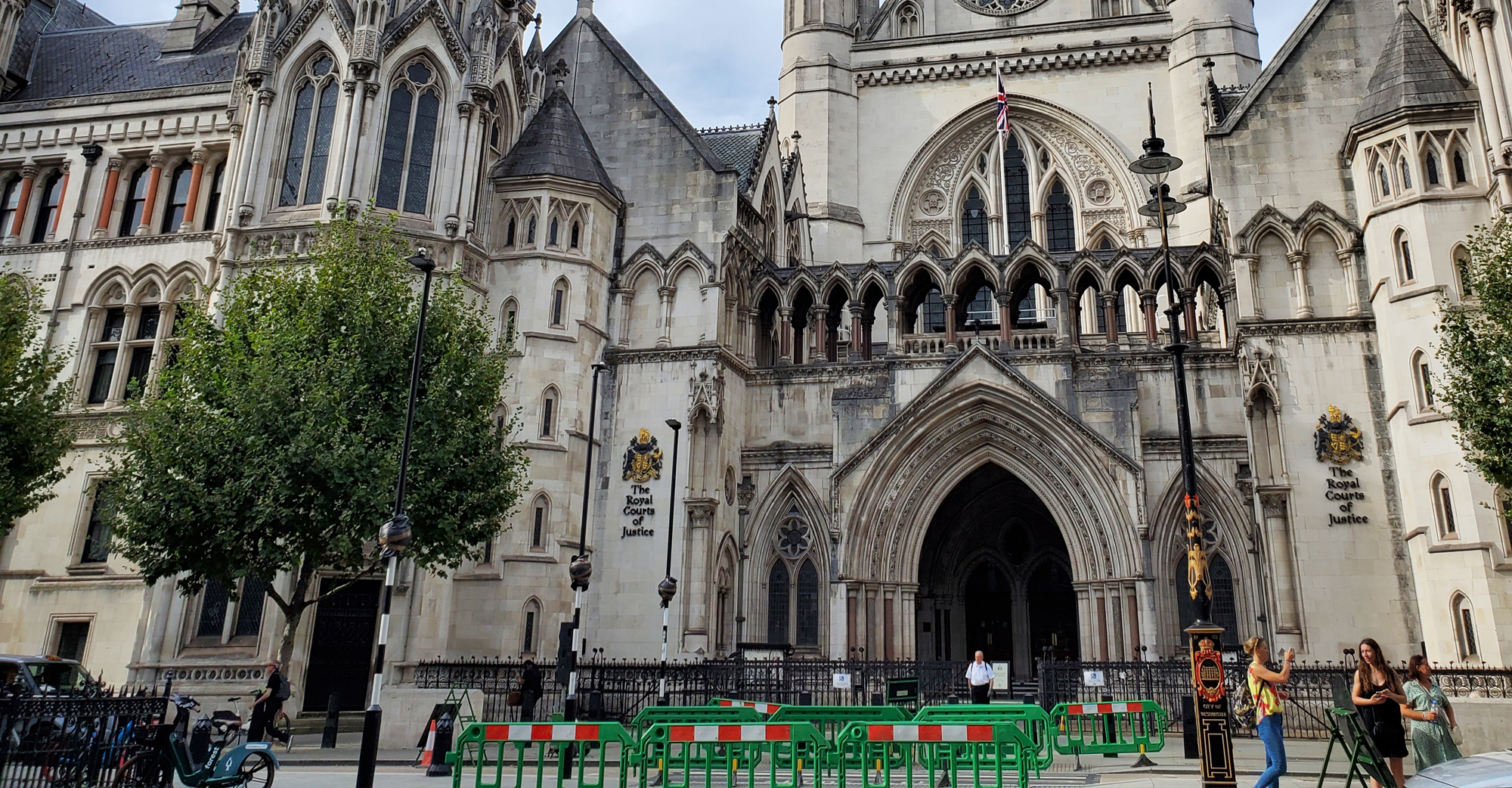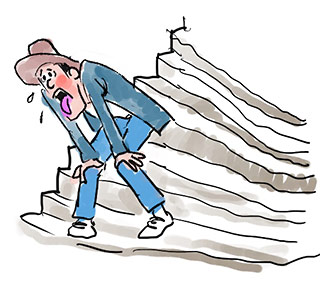What is the colloquial term for a native of Costa Rica? Name the nation which leads the world in coffee consumption. These and more are in our latest travel trivia game.
Global Trivia 7
You have multiple choices. An explanation and a reference comes after every question. There is no fixed order so you can choose from any of the boxes. The SHADED BOXES are what you already answered. Your final score is at the END. Don't hit REFRESH unless you want to start all over. This is part of a continuing series in Traveling Boy.
Start
Congratulations!
You have completed Global Trivia 7.

You scored %%SCORE%% out of a possible 5 points.
Your performance was: %%RATING%%
Your answers are highlighted below.
Question 1 |
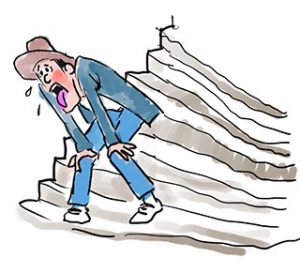
The “stoop” was first introduced to New York by what nation?
A | England |
B | France |
C | Germany |
D | The Netherlands |
E | Russia |
Question 1 :
D: The Netherlands
One of the most distinctive features of a classic NYC brownstones is its stoop — a word appropriated from “stoep,” the Dutch word for “stair.” The Dutch built stoops to raise their parlor floor above flood waters; some posit that the New York City stoops were built to raise the parlor floor above a “sea of horse manure.”
— Traveling Boy
One of the most distinctive features of a classic NYC brownstones is its stoop — a word appropriated from “stoep,” the Dutch word for “stair.” The Dutch built stoops to raise their parlor floor above flood waters; some posit that the New York City stoops were built to raise the parlor floor above a “sea of horse manure.”
— Traveling Boy
Question 2 |

What is the colloquial term for a native of Costa Rica?
A | Aragonese |
B | Compaesano |
C | Paesano |
D | Rossiyane |
E | Tico |
Question 2 :
E: Tico
Tico is a colloquial term for a native of Costa Rica. Costa Ricans are usually called ticos by themselves and persons of other Spanish-speaking countries, in place of the more formal costarricenses.
— Traveling Boy
Tico is a colloquial term for a native of Costa Rica. Costa Ricans are usually called ticos by themselves and persons of other Spanish-speaking countries, in place of the more formal costarricenses.
— Traveling Boy
Question 3 |

Name the painting which sold for highest price
A | "The Card Players" by Paul Cézanne |
B | "Interchange" by Willem de Kooning |
C | “Salvator Mundi” attributed to Leonardo da Vinci |
D | "Nafea Faa Ipoipo (When Will You Marry?)” by Paul Gauguin |
E | "Number 17A" by Jackson Pollock's |
Question 3 :
C: “Salvator Mundi” attributed to Leonardo da Vinci
1. Leonardo da Vinci’s "Salvator Mundi" — $450.3 million

2. Willem de Kooning's "Interchange" — $300 million
3. Paul Cézanne's "The Card Players" — $250 million
4. Paul Gauguin's "Nafea Faa Ipoipo (When Will You Marry?)" — $210 million
5. Jackson Pollock's "Number 17A" — $200 million
— Business Insider
1. Leonardo da Vinci’s "Salvator Mundi" — $450.3 million

2. Willem de Kooning's "Interchange" — $300 million
3. Paul Cézanne's "The Card Players" — $250 million
4. Paul Gauguin's "Nafea Faa Ipoipo (When Will You Marry?)" — $210 million
5. Jackson Pollock's "Number 17A" — $200 million
— Business Insider
Question 4 |
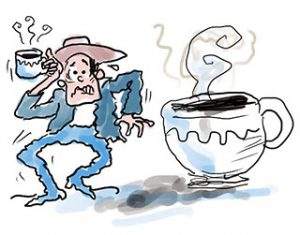
This nation leads the world in the consumption of coffee per person, per year.
A | Denmark |
B | Finland |
C | Great Britain |
D | Norway |
E | US |
Question 4 :
B: Finland
1 – Finland: 12 kg per person, per year
If you’ve ever met a Finn you know that the national average of 12 kg per capita is probably on the low end for most in Finland. If you were to take children out of the calculation, the national average would rise even higher!
Coffee is typically consumed all day, every day, and coffee breaks are required by most workers' unions. Special occasions and post-church luncheons are celebrated with a coffee table - a buffet of cold sandwiches, breads, cookies and cakes, and of course endless "khavi". The most popular coffees in Finland are very light roasts, much lighter than anywhere else in the world. This probably originated early on when Finns would purchase green coffee berries to roast themselves at home. The traditional Finn way of brewing coffee is a variation on Turkish coffee where water and coffee grounds are brought just barely to a boil repeatedly.
2 – Norway: 9.9 kg per person, per year
Like most European countries, coffee in Norway was first made popular among the wealthy in the early 18th century. Even though Norway was a relatively poor country, being ruled by Denmark at the time had its benefits; in this case, lots of cheap java.
Kaffe is typically served black at breakfast, and with dessert after dinner. Norwegians also commonly invite people over specifically for coffee, served with cakes and pastries. The average Norwegian drinks nearly 2 cups of coffee a day, which means the roughly 5 million people of the nation consumed a combined 36,472,000 kg in 2012. If you are ever in rural Norway don’t forget to try "karsk", a cocktail made with weakly brewed coffee and a hefty helping of vodka or moonshine. Don’t worry, if it's too strong you can always light it aflame to burn off some of the alcohol!
3 – Iceland: 9 kg per per person, per year
There must be some correlation between cold climates and a cup of coffee – perhaps it adds a perfect touch of coziness to staying inside on a cold, dark day. Like its other northern European counterparts, the island country of Iceland enjoys, on average, 5 cups of coffee a day per person!
In the capital city of Reykjavik, you won't find coffee giants like Starbucks or Second Cup. However, there is no shortage of smaller, independent coffee shops scattered across the city, many in close radius to one another. In case there was any question whether or not Iceland takes its coffee drinking seriously, the country hosts competitions which place baristas and roasters against one another, in a quest to find the country's highest quality brew.
4 – Denmark: 8.7 kg per person, per year
If the Nordic nations are the kings of Coffee, this nation is appropriately the Danish Prince of the hot brown drink. Residents of the kingdom sip about 1.46 cups of coffee per day.
Like other Scandinavians, coffee in Denmark traditionally is served at each meal and becomes the central focus during special occasions, served with cookies, cakes, and small sandwiches. Danes rank slightly better on another statistic, having the 6th most expensive coffee in the world, so each of those 1.46 cups cost them a pretty krone. So grab a Danish-made Bodum coffee press and some aptly named danishes, and dream about spring in Copenhagen.
5 – Netherlands: 8.4 kg per person, per year
In 1616, the Dutch were the first Europeans to obtain live coffee trees, brought back from Mocha, Yemen by Pieter van der Broecke. The beans from these coffee bushes were then used to begin Dutch coffee cultivation, with the colonies of Java and Suriname eventually becoming major suppliers of coffee to Europe.
Nowadays coffee houses in Amsterdam are well known for serving coffee alongside another specialty item, marijuana, but don’t let that cloud your vision, coffee culture is still strong and rich in the Netherlands. On average the Dutch drink 1.84 cups per day.
Coffee is served in the home for "Koffietijd" (Coffee Time), usually with cookies and cakes. Interestingly the coffee culture is somewhat split between the north and south and along religious lines. The north was traditionally populated with Protestants who prefer to serve coffee with only one cookie, seen as a gesture of modesty. In the south, traditionally populated by Roman Catholics, Koffietijd typically includes "vlaai," a large sweet pie.
The U.S. ranks 25th in coffee consumption at 4.2 kg of coffee consumed per person, per year. The National Coffee Association produced a study this year and found that 64% of Americans drink coffee. Furthermore, 79% of people drinking coffee within the past day brewed coffee at home, compared to 75% in 2017 and 84% in 2012. It seems as though more people are starting to move towards making their coffee at home as opposed to going and purchasing it at a coffee shop (sorry Starbucks, but people are starting to opt for being their own baristas at home.
— World Atlas
1 – Finland: 12 kg per person, per year
If you’ve ever met a Finn you know that the national average of 12 kg per capita is probably on the low end for most in Finland. If you were to take children out of the calculation, the national average would rise even higher!
Coffee is typically consumed all day, every day, and coffee breaks are required by most workers' unions. Special occasions and post-church luncheons are celebrated with a coffee table - a buffet of cold sandwiches, breads, cookies and cakes, and of course endless "khavi". The most popular coffees in Finland are very light roasts, much lighter than anywhere else in the world. This probably originated early on when Finns would purchase green coffee berries to roast themselves at home. The traditional Finn way of brewing coffee is a variation on Turkish coffee where water and coffee grounds are brought just barely to a boil repeatedly.
2 – Norway: 9.9 kg per person, per year
Like most European countries, coffee in Norway was first made popular among the wealthy in the early 18th century. Even though Norway was a relatively poor country, being ruled by Denmark at the time had its benefits; in this case, lots of cheap java.
Kaffe is typically served black at breakfast, and with dessert after dinner. Norwegians also commonly invite people over specifically for coffee, served with cakes and pastries. The average Norwegian drinks nearly 2 cups of coffee a day, which means the roughly 5 million people of the nation consumed a combined 36,472,000 kg in 2012. If you are ever in rural Norway don’t forget to try "karsk", a cocktail made with weakly brewed coffee and a hefty helping of vodka or moonshine. Don’t worry, if it's too strong you can always light it aflame to burn off some of the alcohol!
3 – Iceland: 9 kg per per person, per year
There must be some correlation between cold climates and a cup of coffee – perhaps it adds a perfect touch of coziness to staying inside on a cold, dark day. Like its other northern European counterparts, the island country of Iceland enjoys, on average, 5 cups of coffee a day per person!
In the capital city of Reykjavik, you won't find coffee giants like Starbucks or Second Cup. However, there is no shortage of smaller, independent coffee shops scattered across the city, many in close radius to one another. In case there was any question whether or not Iceland takes its coffee drinking seriously, the country hosts competitions which place baristas and roasters against one another, in a quest to find the country's highest quality brew.
4 – Denmark: 8.7 kg per person, per year
If the Nordic nations are the kings of Coffee, this nation is appropriately the Danish Prince of the hot brown drink. Residents of the kingdom sip about 1.46 cups of coffee per day.
Like other Scandinavians, coffee in Denmark traditionally is served at each meal and becomes the central focus during special occasions, served with cookies, cakes, and small sandwiches. Danes rank slightly better on another statistic, having the 6th most expensive coffee in the world, so each of those 1.46 cups cost them a pretty krone. So grab a Danish-made Bodum coffee press and some aptly named danishes, and dream about spring in Copenhagen.
5 – Netherlands: 8.4 kg per person, per year
In 1616, the Dutch were the first Europeans to obtain live coffee trees, brought back from Mocha, Yemen by Pieter van der Broecke. The beans from these coffee bushes were then used to begin Dutch coffee cultivation, with the colonies of Java and Suriname eventually becoming major suppliers of coffee to Europe.
Nowadays coffee houses in Amsterdam are well known for serving coffee alongside another specialty item, marijuana, but don’t let that cloud your vision, coffee culture is still strong and rich in the Netherlands. On average the Dutch drink 1.84 cups per day.
Coffee is served in the home for "Koffietijd" (Coffee Time), usually with cookies and cakes. Interestingly the coffee culture is somewhat split between the north and south and along religious lines. The north was traditionally populated with Protestants who prefer to serve coffee with only one cookie, seen as a gesture of modesty. In the south, traditionally populated by Roman Catholics, Koffietijd typically includes "vlaai," a large sweet pie.
The U.S. ranks 25th in coffee consumption at 4.2 kg of coffee consumed per person, per year. The National Coffee Association produced a study this year and found that 64% of Americans drink coffee. Furthermore, 79% of people drinking coffee within the past day brewed coffee at home, compared to 75% in 2017 and 84% in 2012. It seems as though more people are starting to move towards making their coffee at home as opposed to going and purchasing it at a coffee shop (sorry Starbucks, but people are starting to opt for being their own baristas at home.
— World Atlas
Question 5 |
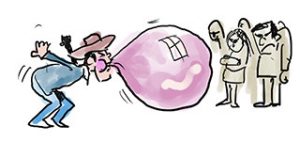
Name the activity that is legal in Singapore.
A | Having dogs and cats as pets |
B | Feeding pigeons |
C | Not flushing a public toilet |
D | Selling chewing gum |
E | Spitting on the street |
Question 5 :
A: Having dogs and cats as pets
Having Dogs and cats as pets is not illegal in Singapore unless you are staying at a public place like a hotel, HDB or condo.
Singapore is incredibly sleek, clean, and cosmopolitan but this is mainly down to the strict rules it has governing its environment.
Selling Chewing Gum: According to Singapore Statutes Online, the first-time penalty for the selling of gum can be as high as $100,000 or a prison sentence of up to two years. Penalties are subject to rise with each conviction, but certain chewing gums that have medical benefits will be allowed.
Not Flushing a Public Toilet: While flushing a public toilet is common courtesy, in Singapore, there is an actual law against it. If you're caught leaving without flushing the toilet, you're looking at a fine of around $150.
Spitting on the street may happen a lot in mainland China but don't think you can do the same in Singapore. Not only will you be openly berated by locals but you'll be fined $500.
— Business Insider
Having Dogs and cats as pets is not illegal in Singapore unless you are staying at a public place like a hotel, HDB or condo.
Singapore is incredibly sleek, clean, and cosmopolitan but this is mainly down to the strict rules it has governing its environment.
Selling Chewing Gum: According to Singapore Statutes Online, the first-time penalty for the selling of gum can be as high as $100,000 or a prison sentence of up to two years. Penalties are subject to rise with each conviction, but certain chewing gums that have medical benefits will be allowed.
Not Flushing a Public Toilet: While flushing a public toilet is common courtesy, in Singapore, there is an actual law against it. If you're caught leaving without flushing the toilet, you're looking at a fine of around $150.
Spitting on the street may happen a lot in mainland China but don't think you can do the same in Singapore. Not only will you be openly berated by locals but you'll be fined $500.
— Business Insider
Once you are finished, click the button below. Any items you have not completed will be marked incorrect.
Get Results
There are 5 questions to complete.
You have completed
questions
question
Your score is
Correct
Wrong
Partial-Credit
You have not finished your quiz. If you leave this page, your progress will be lost.
Correct Answer
You Selected
Not Attempted
Final Score on Quiz
Attempted Questions Correct
Attempted Questions Wrong
Questions Not Attempted
Total Questions on Quiz
Question Details
Results
Date
Score
Hint
Time allowed
minutes
seconds
Time used
Answer Choice(s) Selected
Question Text
All done
Deplorable! You need to travel more! This is pathetic!
Deplorable! You need to travel more! This is pathetic!
Embarrassing! Keep trying! We know you're better than that. Play the game again.
Not that bad! But not good either. Play the game again.
Pretty good ... but not perfect.
Perfect! Are you brilliant traveler or what?
